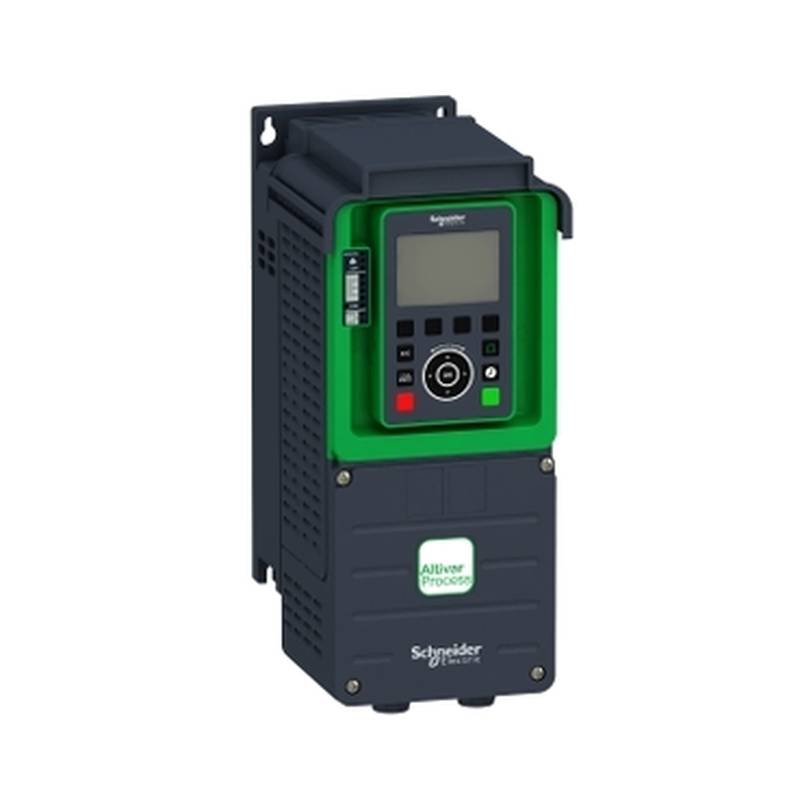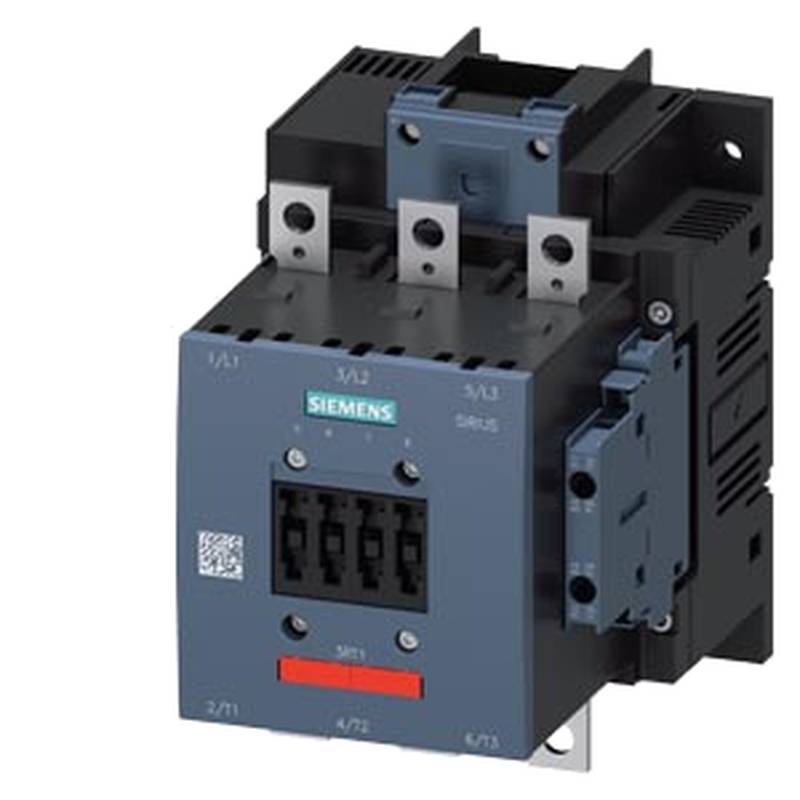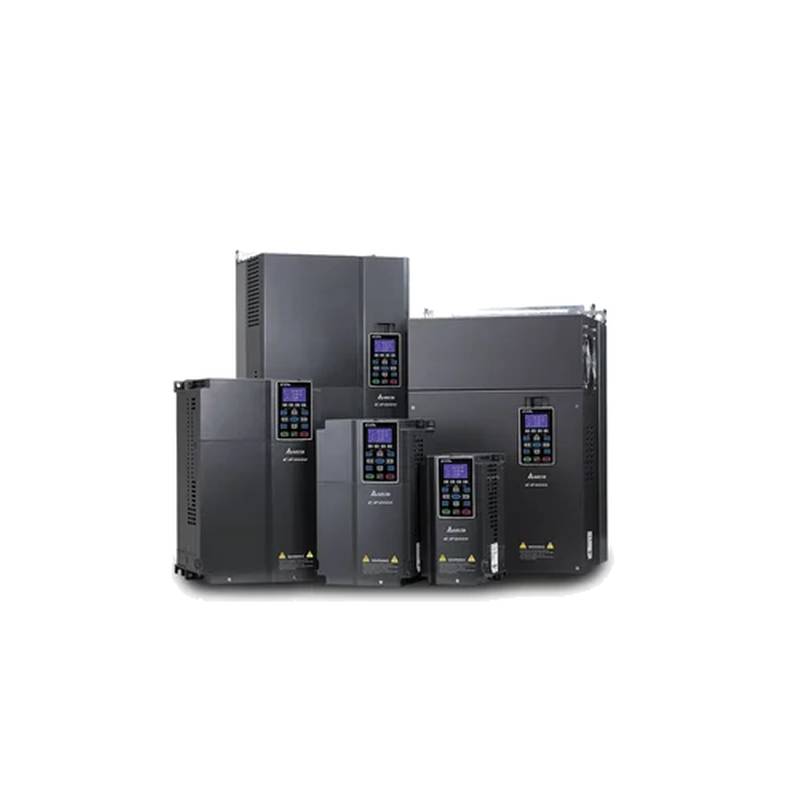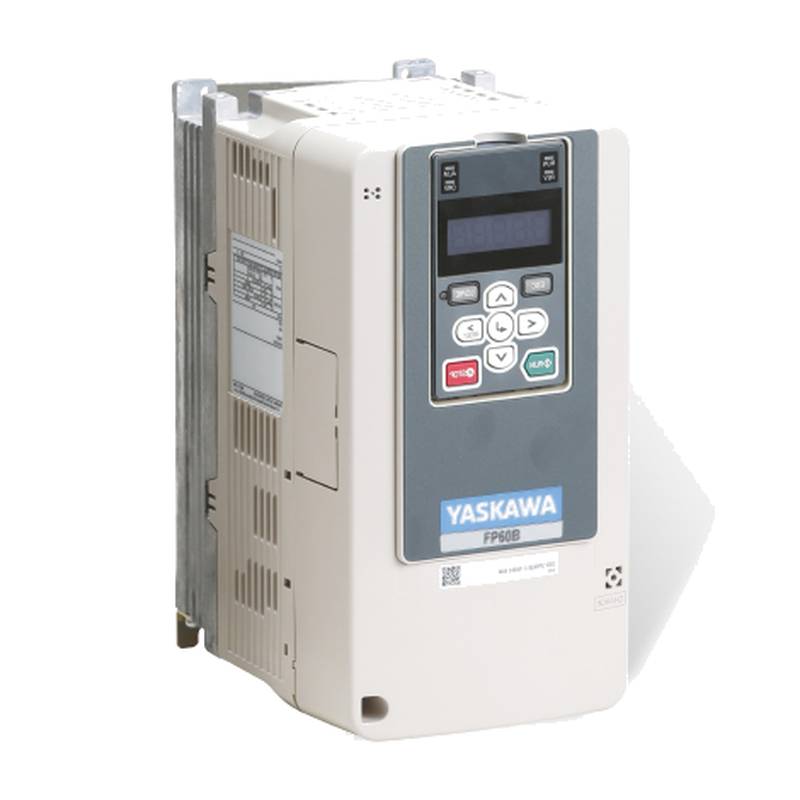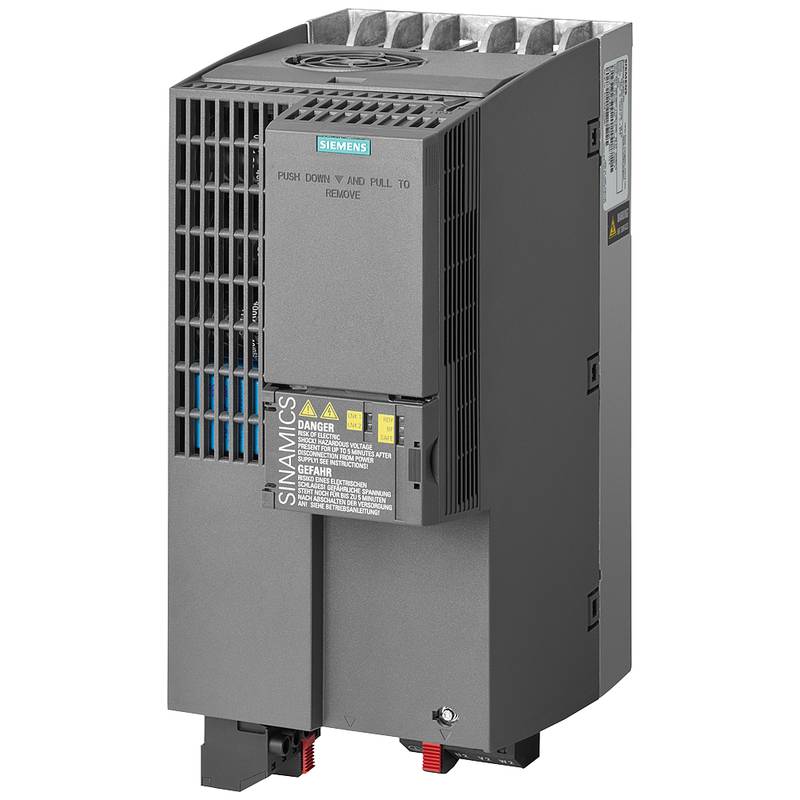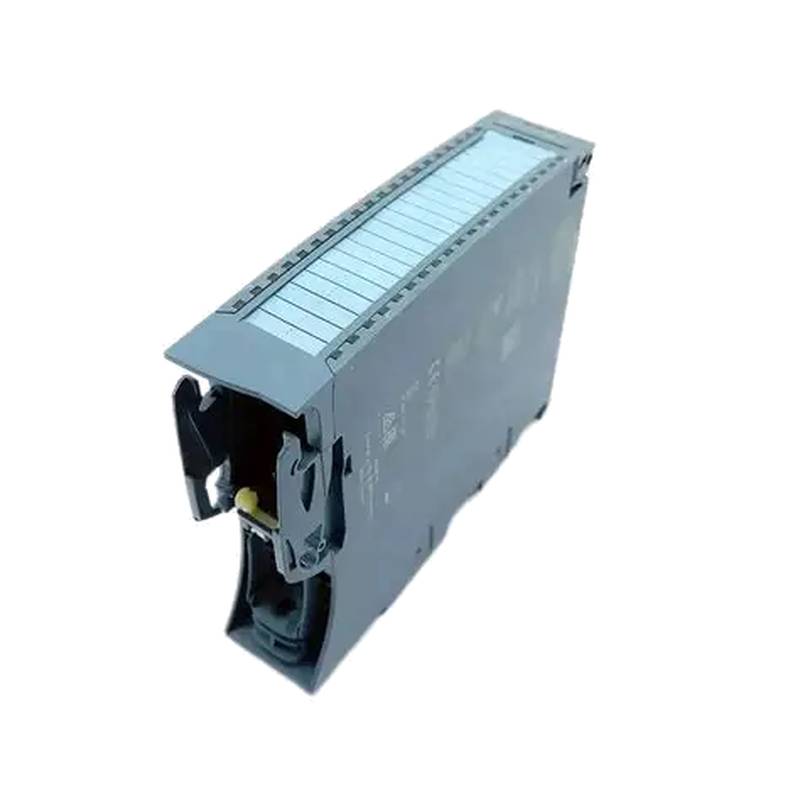
The SCHNEIDER ATV930D11N4 is a robust Low Voltage Pump Control Variable Frequency Drive (VFD) designed to optimize motor performance in demanding industrial applications. Boasting a 23.5A current rating and an 11kW power capacity, this frequency converter offers superior energy efficiency, precise speed control, and enhanced motor protection. Its advanced features make it an ideal solution for variable torque applications, significantly reducing energy consumption and operational costs. The ATV930 series is engineered for reliability, ensuring continuous operation even in harsh environments, and provides seamless integration into complex automation systems.
Product Specifications
| Feature | Specification |
| :------------------ | :------------------------------------------ |
| Product Name | SCHNEIDER ATV930D11N4 |
| Type | Low Voltage Pump Control VFD |
| Rated Current | 23.5 Amperes |
| Rated Power | 11 Kilowatts (kW) |
| Voltage Rating | 380-415V AC (3 Phase) |
| Output Frequency | 0-599 Hz |
| Protection Rating | IP21/IP4X (depending on enclosure) |
| Mounting | Wall-mount, Floor-mount |
| Communication | Modbus RTU, Ethernet/IP, Profibus DP |
| Braking | Integrated braking chopper (for optional resistor) |
| Motor Control | Sensorless Vector Control, DTC (Direct Torque Control) |
| Operating Temperature | -15°C to +50°C (derating above 40°C) |
Core Features & Market Positioning
The SCHNEIDER ATV930D11N4 stands out in the industrial VFD market due to its advanced Direct Torque Control (DTC) technology, which delivers exceptional torque accuracy and dynamic response without the need for a motor encoder. This capability is crucial for pump applications where precise flow and pressure regulation are paramount. Its robust design ensures high performance and longevity, positioning it as a premium choice for critical infrastructure and heavy industries. The integrated safety functions, such as Safe Torque Off (STO), further enhance its market appeal by meeting stringent industrial safety standards and simplifying machine safety integration. Furthermore, its comprehensive communication options facilitate seamless integration into SCADA and DCS systems, supporting Modbus RTU, Ethernet/IP, and Profibus DP, enabling advanced process monitoring and control.
Key Application Scenarios
This 11kW VFD is exceptionally well-suited for a wide array of pump control applications within various industrial sectors. Its core strength lies in variable torque environments, making it ideal for centrifugal pumps used in water and wastewater treatment plants, where flow rates need to be adjusted based on demand. In the oil and gas industry, the ATV930D11N4 is employed for applications such as chemical injection pumps and pipeline boosting, benefiting from its precise speed regulation and resistance to harsh operating conditions. Furthermore, it finds extensive use in HVAC systems for controlling circulation pumps, fan coil units, and cooling towers, contributing to significant energy savings by matching motor speed to building load requirements.
Practical System Integration Guidance
Integrating the SCHNEIDER ATV930D11N4 into an existing system requires careful consideration of motor compatibility, power supply, and control wiring. For proper installation, ensure adequate ventilation around the drive to maintain optimal operating temperatures, especially when operating near its maximum capacity or in ambient temperatures above 40°C. Wiring connections should adhere strictly to the diagrams provided in the user manual, using appropriately sized conductors for both the power input/output and control signals to prevent overheating and ensure signal integrity. During commissioning, the drive's parameters, particularly motor data (rated power, voltage, current, frequency, speed, and motor poles), must be accurately entered for the Direct Torque Control (DTC) to function optimally and ensure precise speed and torque regulation. A motor auto-tuning process is recommended to fine-tune the DTC algorithm to the specific motor characteristics for best performance.
Operation and Risk Mitigation
Safe operation of the SCHNEIDER ATV930D11N4 VFD necessitates adherence to established safety protocols and an understanding of its fault management system. Always ensure the drive is properly grounded and that all safety interlocks are functional before powering up the unit. Emergency stop functionality is critical, and the integrated Safe Torque Off (STO) feature should be utilized where applicable to prevent unexpected motor starts. Common fault codes, such as "Overcurrent" (often F001) or "Over-temperature" (F002), typically indicate issues with motor load, cabling, or ambient conditions, requiring prompt investigation and resolution to prevent damage. Reviewing the drive's fault log can provide valuable insights into recurring issues, enabling proactive maintenance and minimizing downtime.
Scalability & Long-Term Value
The SCHNEIDER ATV930D11N4 offers significant scalability and long-term value through its robust feature set and compatibility with Schneider Electric's broader EcoStruxure™ platform. Its modular design allows for the addition of communication cards and I/O extensions, enabling adaptation to evolving system requirements and integration with advanced automation architectures. The drive's inherent energy efficiency translates directly into reduced operational expenditure over its lifespan, providing a strong return on investment, particularly in high-usage pump applications. Furthermore, its compatibility with digital services and IIoT connectivity through optional communication modules facilitates predictive maintenance, remote monitoring, and optimized process control, ensuring its relevance in the increasingly connected industrial landscape.
FAQs
Q1: What are the primary benefits of using the SCHNEIDER ATV930D11N4 for pump control?
The ATV930D11N4 offers precise speed and torque control. It significantly enhances energy efficiency in variable torque applications.
It provides advanced motor protection features, extending equipment lifespan. It also integrates safety functions for enhanced operational security.
This VFD ensures reliable performance in demanding industrial environments. It supports seamless integration with automation systems.
Q2: Can this VFD be used with any type of motor?
Yes, it's designed for 3-phase AC induction motors. Ensure motor specifications match the VFD's ratings.
Accurate motor parameter entry during commissioning is crucial. This ensures optimal performance of the DTC technology.
Always refer to the VFD manual for detailed compatibility guidelines. Check for any specific motor type limitations.
Q3: What are the typical installation requirements for the ATV930D11N4?
Ensure adequate ventilation to prevent overheating. Maintain clearance around the drive as per the manual.
Proper electrical grounding is essential for safety. Use appropriately sized conductors for all connections.
Mount the drive securely in a suitable industrial environment. Avoid areas with excessive dust or moisture.
Q4: How does the Direct Torque Control (DTC) feature benefit pump applications?
DTC provides highly accurate torque regulation. This allows for precise flow and pressure management in pumps.
It eliminates the need for an external motor encoder. This simplifies installation and reduces potential failure points.
The system responds rapidly to load changes. This ensures stable operation under varying conditions.
Q5: What communication protocols does the SCHNEIDER ATV930D11N4 support?
It natively supports Modbus RTU. This is common for basic automation networks.
Optional communication cards enable support for Ethernet/IP. Profibus DP is also available for industrial fieldbuses.
These protocols facilitate integration into SCADA and DCS systems. Remote monitoring and control become highly efficient.
Q6: What are common fault codes for the ATV930D11N4 and their meanings?
F001 typically indicates an Overcurrent fault. This may point to motor issues or rapid acceleration.
F002 often signifies an Over-temperature warning. Check ambient conditions and cooling fan operation.
Refer to the user manual for a complete list. Each code guides troubleshooting specific issues.
Q7: Is the Safe Torque Off (STO) feature included in this VFD?
Yes, the STO function is integrated. It provides a reliable safety measure.
STO prevents the motor from generating torque. This is crucial during maintenance or emergency stops.
Ensure STO is correctly wired and configured. Consult the safety manual for implementation details.
Q8: How can I improve energy efficiency with this VFD?
By matching motor speed to the actual load demand. This avoids running motors at full speed unnecessarily.
Implement energy-saving functions within the VFD. Optimize acceleration and deceleration ramps.
Regularly monitor power consumption. Fine-tune parameters for maximum efficiency.
Q9: What is the IP rating of the ATV930D11N4?
The standard rating is typically IP21. This offers protection against solid objects.
An IP4X rating is also achievable. This is with the use of specific enclosures or accessories.
Always verify the exact IP rating for your model. Ensure it suits the environmental conditions.
Q10: Can the ATV930D11N4 be integrated into IIoT systems?
Yes, through optional communication modules. These enable connectivity to industrial networks.
The EcoStruxure™ platform supports integration. This allows for remote monitoring and data analytics.
This connectivity facilitates predictive maintenance strategies. It optimizes overall system performance.














